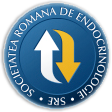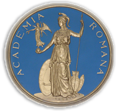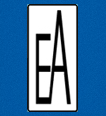
- Login
- Register
- Home/Current Issue
- About the journal
- Editorial board
- Online submission
- Instructions for authors
- Subscriptions
- Foundation Acta Endocrinologica
- Archive
- Contact
 Romanian Academy
Romanian Academy
 The Publishing House of the Romanian Academy
The Publishing House of the Romanian Academy

ACTA ENDOCRINOLOGICA (BUC)
The International Journal of Romanian Society of Endocrinology / Registered in 1938in Web of Science Master Journal List
Acta Endocrinologica(Bucharest) is live in PubMed Central
Journal Impact Factor - click here.

Showing 1 - 2 of 2
-
Case Report
Bjekic-Macut J, Baltic T, Petrovic Nikolic T, Brankovic M, Brajkovic M, Nikolic N, Ivanovic N, Zdravkovic M
Iodinated Contrast Media Induced Thyroid Storm and Acute Coronary Syndrome: A Case ReportActa Endo (Buc) 2024 20(3): 384-387 doi: 10.4183/aeb.2024.384
AbstractBackground. A thyroid storm is an extreme disorder that occurs in severe thyrotoxicosis. This condition is life-threatening, with mortality rates up to 10-20%. A typical dose of iodinated contrast media (ICM) contains approximately 13,500 μg of free iodide and 15–60 g of bound iodine, representing an acute iodide load of 90 to several hundred thousand times the recommended daily intake of 150 μg. As a result of sudden exposure to high iodide loads, thyroid hormone regulation can be disrupted, leading to hypothyroidism (Wolff-Chaikoff effect) or hyperthyroidism (Jod-Basedow phenomenon), particularly in those with underlying nodular thyroid disease. Case description. A 37-year-old man presented to the emergency room (ER) with clinical and electrocardiographic signs of acute myocardial infarction. Primary PCI with iodinated contrast was performed. After the intervention, laboratory analyses revealed thyrotoxicosis, and the patient was administered initial thyrosuppressive therapy along with cardiac therapy and discharged from the hospital. One week later, he returned to the hospital with signs of a thyroid storm. Conclusion. This case report aimed to raise awareness regarding the routine evaluation of thyroid function in patients with and without previous signs and symptoms of thyrotoxicosis who had undergone acute myocardial infarction and coronary angiography. -
Letter to the Editor
Koracevic G, Zdravkovic M
What is Stress Hyperglycemia? A Suggestion for an Improvement of its DefinitionActa Endo (Buc) 2021 17(4): 548-551 doi: 10.4183/aeb.2021.548
AbstractContext. Stress hyperglycemia has been studied in numerous critical illnesses for several decades. Despite the extensive accumulation of knowledge about this topic, the definition of stress hyperglycemia is not updated since 2007. Subjects and Methods. We performed a narrative review about stress hyperglycemia in acute myocardial infarction (AMI), aiming to improve its current definition and to give evidence supporting this. Results. The definition of stress hyperglycemia in 2021 we recommend is: “SH is a high ABGly in an AMI patient irrespective of DM status. It can be calculated as e.g., “stress hyperglycemia ratio” or “admission glucose delta”/“glycemic gap”. This definition may serve to start a consensus document of the experts in the field. The evidence accumulates supporting the possibility to recognize stress hyperglycemia also in AMI patients with diabetes mellitus (DM) by calculating glycemia during the previous 2-3 months using glycated hemoglobin. Moreover, it is now obvious that 2007 definition of stress hyperglycemia did not take into account the necessity to separate cut-offs for the subgroups with vs. without DM. Conclusions. We demonstrated the insufficiency of the current 2007 definition of stress hyperglycemia, provided evidence-based recommendation for the improvement and suggested the need for a consensus of the experts on this topic. In order to optimize the treatment of stress hyperglycemia in numerous critical illnesses, we ought to have its universal definition (as we already have the universal definition of AMI).
Showing 1 - 2 of 2